The Savannah River is one of Georgia’s longest waterways, and it forms a natural border between South Carolina and Georgia. How deep is the Savannah River? It’s 105 feet at its deepest point but averages around 10 to 40 feet overall.
Originating in the Blue Ridge Mountains (part of the Appalachian Mountains) and ending in the Atlantic Ocean, the Savannah River is a rich resource for people in the region, providing drinking water to over one million people.
The Founding of Savannah and Augusta
The Savannah River flows past two large metropolitan areas, Savannah and Augusta. In 1733, General James Oglethorpe and 120 settlers from England landed on a bluff overlooking the Savannah River and established the city of Savannah. Three years later, Oglethorpe founded Augusta due to its strategic location along the Savannah River.

The moss-hung oak path leading up to the Forsyth Park Fountain is one of Savannah’s best-known sites.
©Sean Pavone/Shutterstock.com
Where is the Savannah River Located on a Map?
The Savannah River is formed at the northernmost spot where the Tugaloo River and Chattooga River combine in the Appalachian Mountains. The river travels 301 miles down the mountains through agricultural land, upland forests, creeks, streams, swamplands, freshwater, and marine marshes before it widens into a marine estuary and flows into the ocean near Tybee Island in Georgia.
Significance of the Savannah River
Before European settlers came to the area, Native Americans lived along the high bluffs of the river. The river was once navigable by freight barges between Augusta and the Atlantic Ocean, although this ended when maintenance for the commercial shipping channel ended in 1979.

The Savannah River serves as a boundary between Augusta and South Carolina.
©Kevin Ruck/Shutterstock.com
Today, the river not only provides drinking water to Augusta, Savannah, and other smaller cities but it also is used to generate electricity for the Georgia Power Company. Further, the river supplies water to the Savannah River Site, a U.S. Department of Energy (DOE) reservation. And it flows past two nuclear reactors, providing cooling.
Wildlife of the Savannah River
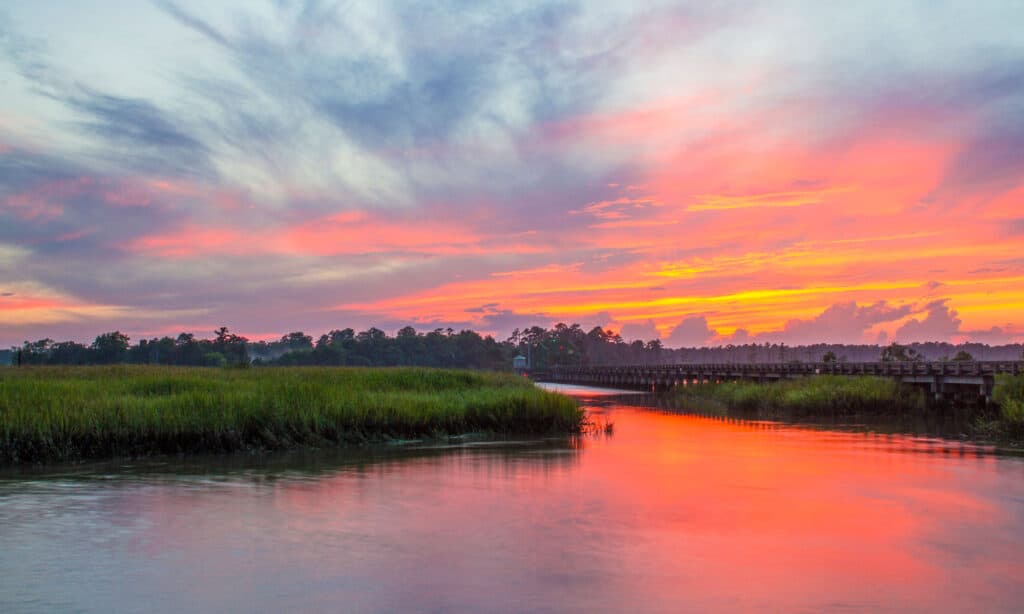
The Savannah River is home to a rich wildlife population.
©iStock.com/Allen Allnoch
The 301 miles of the Savannah River provide a rich habitat for a variety of plants and animal life. From the mountains to the sea, the river is home to diverse wildlife.
Savannah National Wildlife Refuge
Located near Savannah, in both Georgia and South Carolina, the 28,168-acre Savannah National Wildlife Refuge is home to some of the following bird species: bald eagles, great horned owls, osprey, and wood storks.
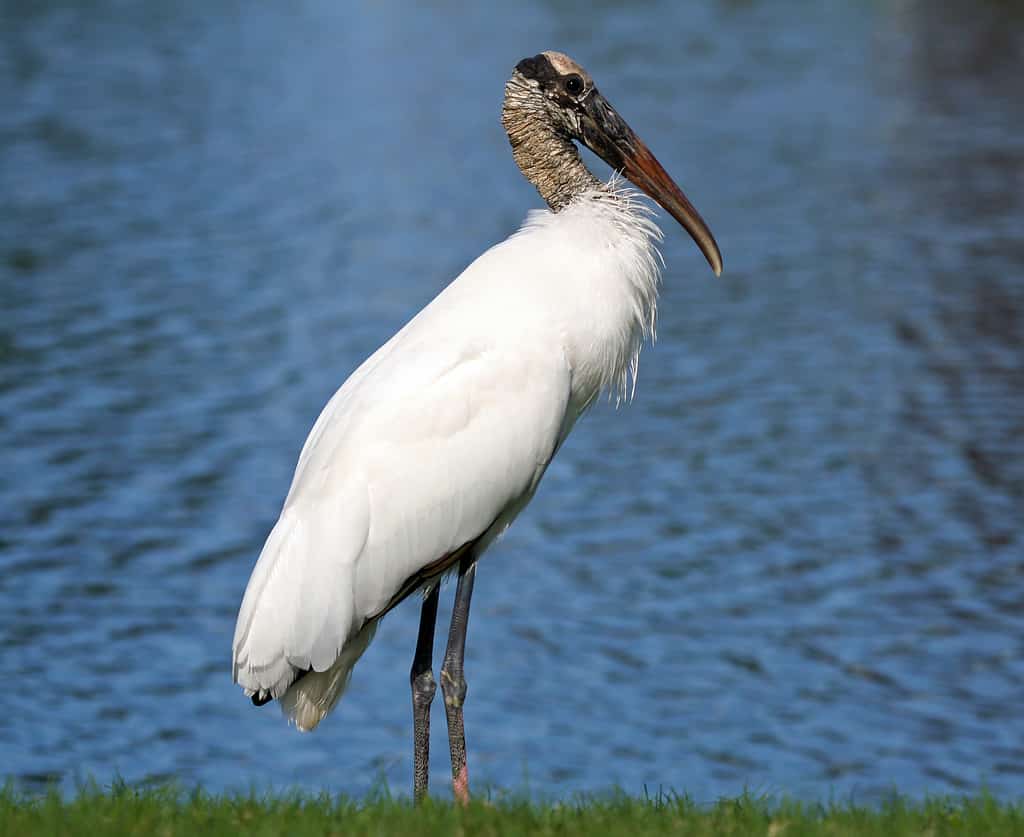
The wood stork lives in cypress swamps, marshes, ponds, and lagoons along the Savannah River.
© Googie man at en.wikipedia / CC BY-SA 3.0 – License
Found swimming in the river, one may spot the gentle and slow-moving Florida manatee, a subspecies of the West Indian manatee. Manatees make their way north to Georgia from April to October. Surprisingly, manatees are more closely related to elephants than dolphins or whales.
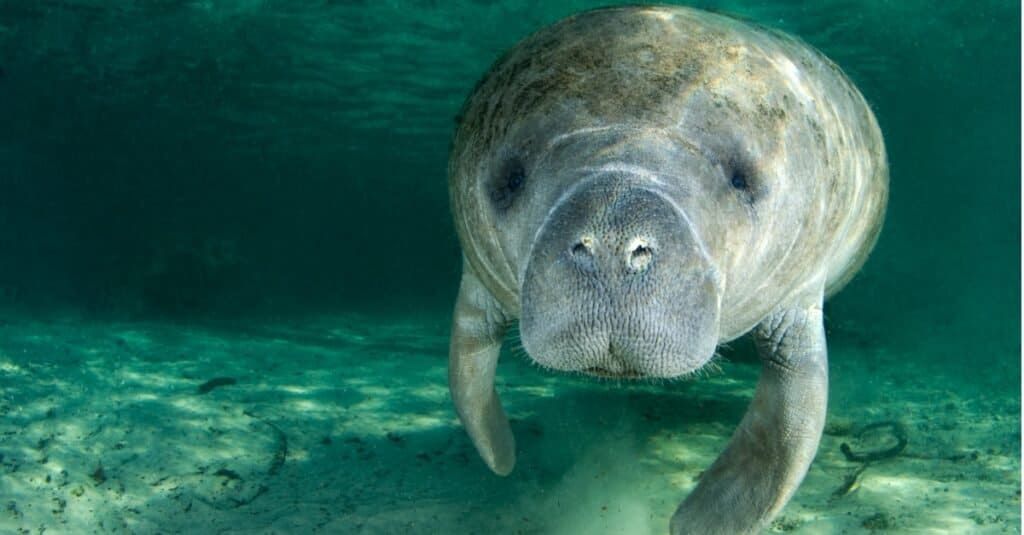
Manatees may be found in the Savannah River from April to October.
©A Cotton Photo/Shutterstock.com
Other animals you may see in the refuge include:
Swimming in the river are many species of fish, such as:
- Bass
- American eel
- Striped bass (Atlantic striped bass, rockfish, or striper)
- Trout
- Catfish

The striped bass fish is a predatory fish that can be found in the Savannah River.
©Pelow Media/Shutterstock.com
Additionally, blue crabs, fiddler crabs, pig frogs, and tree frogs can be found in and around the river banks.
Do Dolphins Swim in the Savannah River?
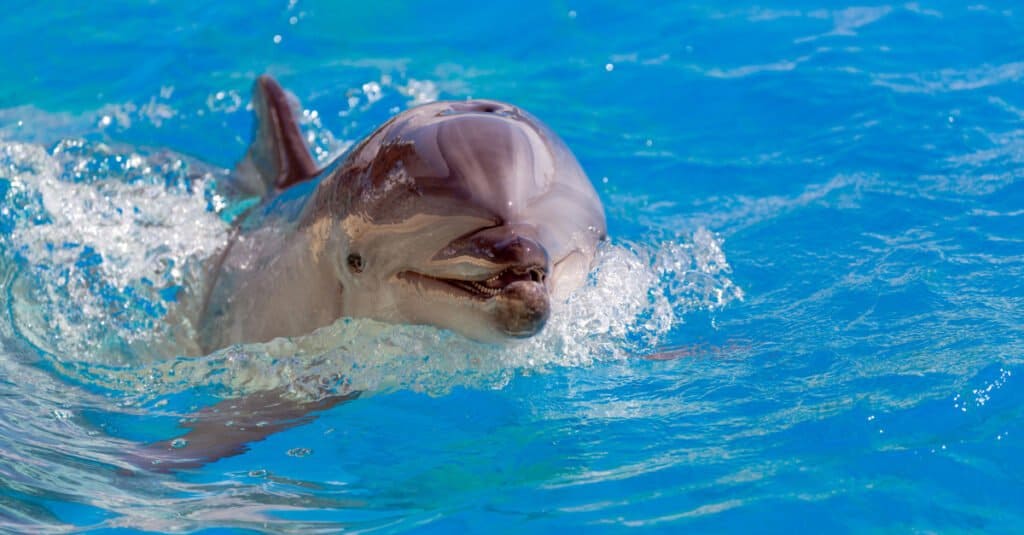
Bottlenose dolphins can be seen along the beach or within the rivers of coastal Georgia.
©Lefteris Papaulakis/Shutterstock.com
Bottlenose dolphins are commonly spotted near Tybee Island, where the Savannah River empties into the Atlantic Ocean. Many companies offer tour groups to view the playful marine mammals frolicking in the water.
Rare Species Found in the Savannah River Basin
The Savannah River Basin is home to the rare shortnose sturgeon, a massive prehistoric fish, and the Atlantic sturgeon. And birders from around the country come to see flocks of the beautiful swallow-tailed kite, a bird of prey that arrives in mid-March to April from its winter spot in South America.
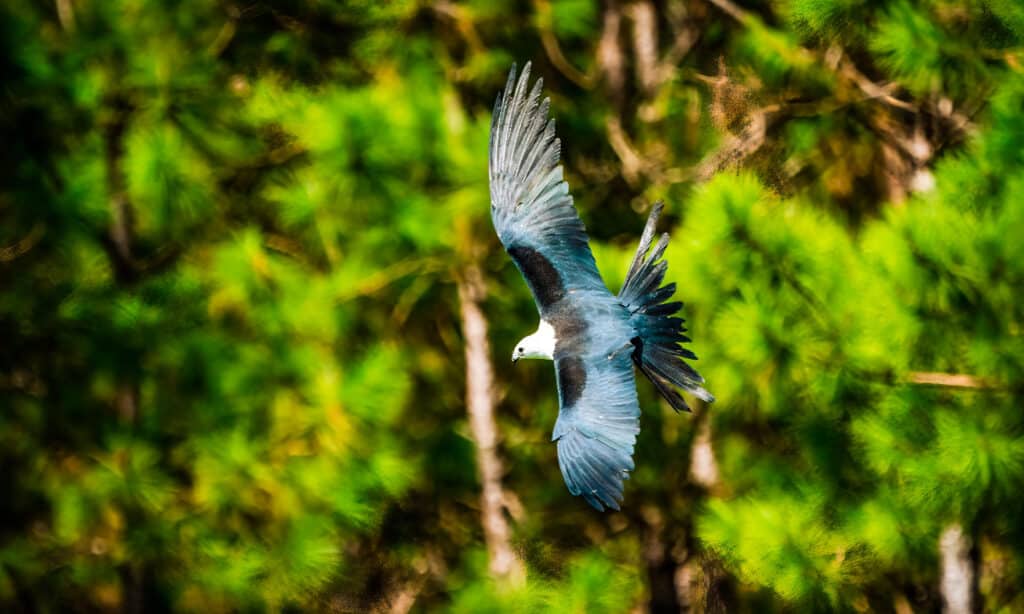
The swallow-tail kite can be found soaring above the trees in the swampland of the Savannah River.
©Wirestock Creators/Shutterstock.com
What to Do on the Savannah River?
Birding, fishing, boating, camping, and hiking are just some of the many recreational activities available along the Savannah River. Near the coast, charter tours are a popular activity. Additionally, tour groups provide day trips to explore the many islands and inlets. Kayaking, canoeing, and stand-up paddleboarding are also available in the Lowcountry.
Along the river are two big state parks, the Calhoun Falls State Park and Hamilton Branch State Park. Both parks have campgrounds where visitors can swim, fish, hike, and enjoy the scenic landscape.
And near the city of Augusta, outdoor enthusiasts can kayak, paddle board, or jet ski on the river.
Fossil Hunting
On its way to the sea, the Savannah River flows past numerous small islands and inlets. These islands are popular spots for shell hunting, dolphin spotting, and also, fossil hunting. The fossils found are mainly fossilized shark teeth.
Closer to Augusta is Shell Bluff, a hundred-foot cliff and fossil bed. Shell Bluff is famous for its outcropping of giant oyster shell fossils, Crassostrea gigantissima. This ancient oyster dates all the way back to the Eocene age, around 55.8 to 33.9 million years ago. Scientists believe a natural disaster (earthquake or hurricane) buried the bluff with sediment, preserving the oysters and other mollusks in the rock for millions of years.
The photo featured at the top of this post is © iStock.com/jimfeng
Thank you for reading! Have some feedback for us? Contact the AZ Animals editorial team.






